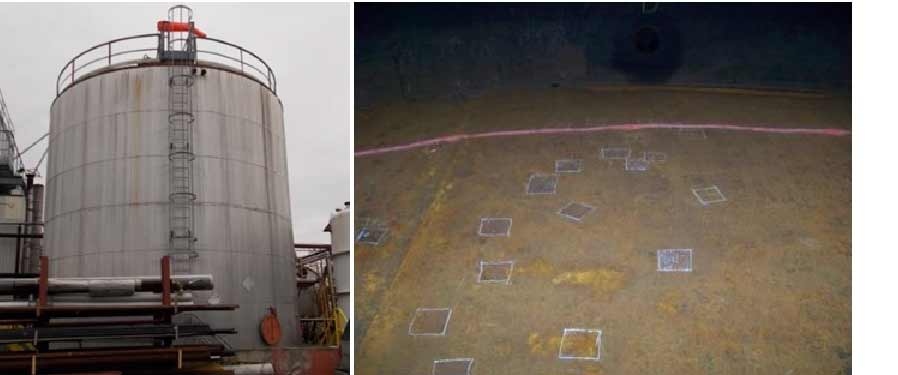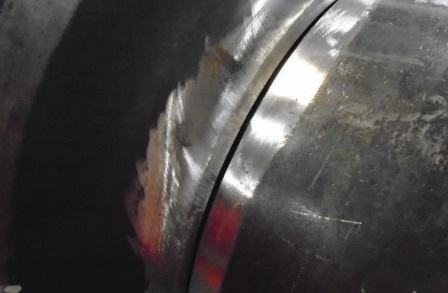A Detailed Review of Storage Tank Welding Inspection Criteria and Methodologies for Improved Weld Quality and Efficiency
The significance of welding examination requirements in the manufacturing of containers can not be overstated, as they work as the backbone for making certain weld stability and functional dependability. Numerous assessment techniques, consisting of visual assessments and progressed non-destructive testing approaches, are critical in determining prospective flaws that might endanger performance. In addition, adhering to governing requirements not just enhances weld quality however also minimizes the risk of expensive failings. As we discover the nuances of these approaches, it ends up being important to take into consideration how a methodical technique can revolutionize current techniques and result in considerable enhancements in end results.
Importance of Welding Inspection Requirements

Welding inspection requirements incorporate a range of criteria, consisting of material specifications, welding procedures, and credentials of workers associated with the welding procedure. By implementing these standards, organizations can systematically recognize and rectify prospective defects, therefore lowering the chance of expensive repair work or disastrous failings. Extensive evaluation methods promote a society of liability and accuracy, encouraging welders to preserve high degrees of craftsmanship.

Typical Welding Assessment Methods


Ultrasonic Checking (UT) is one more common strategy, making use of high-frequency audio waves to detect inner imperfections that may not be noticeable externally. This method is specifically efficient for identifying gaps or incorporations within the weld metal. Magnetic Particle Examining (MT) is likewise widely utilized, particularly for ferromagnetic products, as it exposes surface and near-surface flaws via the application of electromagnetic fields and ferrous bits.
In Addition, Liquid Penetrant Screening (PT) identifies surface-breaking flaws by applying a penetrant to the weld and after that making use of a designer to attract out the penetrant. Each of these strategies adds to a detailed assessment approach, ensuring that welds satisfy the rigid top quality requirements called for in container building.
Regulative Specifications and Conformity
Regulatory criteria and compliance are important parts in guaranteeing the safety and dependability of welded structures in storage tank construction - Tank Welding Inspection. These requirements serve to establish minimum demands for product residential or commercial properties, welding procedures, and examination methods, therefore decreasing the threat of structural failings and boosting overall efficiency
Trick organizations, such as the American Culture of Mechanical Engineers (ASME) and the American Welding Society (AWS), offer guidelines that are extensively adopted in the industry. Compliance with these requirements not only guarantees adherence to ideal methods but likewise satisfies legal and contractual obligations, securing the interests of stakeholders.
Regulative bodies usually mandate adherence to details codes, such as ASME Code Section IX for welding qualifications and API 650 for bonded tanks. These codes describe demands for welding techniques, certifications of employees, and testing methods to validate weld stability.
Routine audits and assessments are essential to preserving compliance, as they assist identify variances from developed criteria. Non-compliance can lead to significant penalties, project delays, and safety hazards. Thus, a robust understanding of regulatory standards and a commitment to compliance are vital in accomplishing top notch and sturdy bonded tank frameworks.
Non-Destructive Testing Methods
How can the integrity of bonded frameworks be guaranteed without triggering damages? Non-destructive screening (NDT) approaches supply a durable service, allowing assessors to assess weld top quality without compromising the product - Tank Welding Inspection. Among the most typical NDT strategies are ultrasonic screening (UT), radiographic testing (RT), magnetic bit testing (MT), and color penetrant testing (PT)
Ultrasonic testing uses high-frequency acoustic waves to spot inner flaws and define material residential or commercial properties. It provides exact measurements and is specifically effective for thick products. Radiographic testing entails passing X-rays or gamma rays through the weld, developing pictures that expose structural flaws such as splits or voids. This technique is very useful for examining the integrity of intricate welds.
Magnetic particle screening is suited for ferromagnetic materials, where magnetic fields expose surface area and near-surface discontinuities. Dye penetrant screening utilizes a fluid color to highlight surface-breaking flaws, making it an efficient approach for non-porous materials.
Each of these NDT approaches has distinct benefits, permitting thorough analyses customized to certain products and welding procedures. By applying these strategies, markets can make sure the integrity and safety of bonded frameworks, ultimately improving general performance.
Enhancing Weld Quality Through Examination
Efficient evaluation plays an important role in enhancing weld high quality, acting as a vital checkpoint in the fabrication process. By recognizing possible issues early, inspections mitigate the risk of jeopardized structural honesty and make sure compliance with sector criteria. Employing a combination of visual evaluations, non-destructive testing (NDT) approaches, and mechanical analyses, assessors can detect issues such as porosity, cracks, and insufficient fusion.
Carrying out a robust assessment method not just boosts read this article the total top quality of welds yet also fosters a culture of accountability among welders and makers. Normal training and qualification of evaluation employees ensure that they are furnished with the necessary abilities to acknowledge and attend to prospective problems successfully. This proactive strategy decreases rework and connected expenses, ultimately adding to predict efficiency.
Moreover, thorough documentation of inspection searchings for supplies important insights right into reoccuring problems, helping with continuous renovation in welding methods. By leveraging innovative modern technologies, such as automated ultrasonic screening or digital radiography, weld top quality can be boosted through extra exact evaluations. Finally, an extensive assessment process is crucial in achieving high-grade welds, ensuring safety and security, integrity, and durability in storage tank construction.
Verdict
In conclusion, the application of extensive container welding inspection requirements and approaches read review is essential for guaranteeing weld honesty and efficiency. By making use of a mix of visual assessments, non-destructive testing techniques, and adherence to governing requirements, companies can properly recognize and mitigate possible flaws. Promoting a culture of liability among welders better enhances the top quality of welding procedures. Eventually, these practices add to lowered structural failings, reduced fixing expenses, and weblink improved functional performance within the industry.